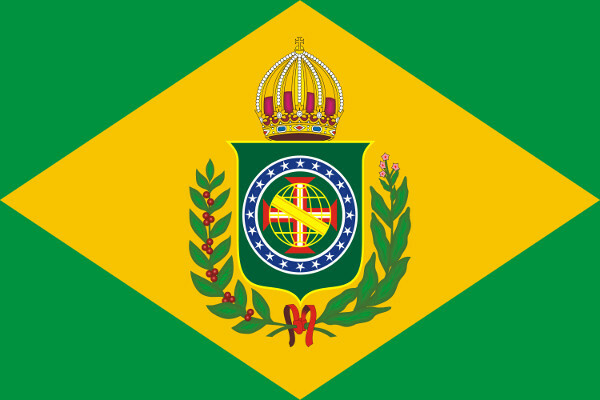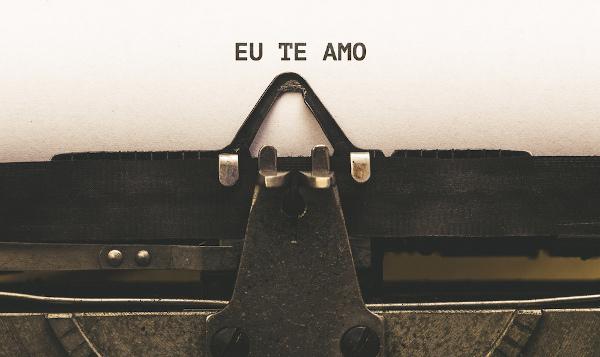THE abolition of slavery was one of the most remarkable events in the history of Brazil and determined the end of the enslavement of blacks in Brazil. The abolition of slave labor occurred through the Golden Law, approved on May 13, 1888 with the signature of the regent of Brazil, Princess Isabel. The abolition of slavery was the conclusion of a popular campaign that pressured the Empire for the institution of slavery to be abolished in our country.
Also access:Understand what racism is and learn about the ways it is manifested
Historical context
The abolition of slave labor was a subject debated in our country throughout the nineteenth century. This subject was already discussed by some personalities in the first years of our independence, like José Bonifácio, and dragged along the entire monarchic period. But the first issue that took real importance in the political scenario of our country was the prohibition of the slave trade.
Trafficking existed in Brazil since the mid-16th century, however, in the 19th century, the British began to to pressure, first, Portugal and then Brazil so that the slave trade was prohibited on here. British pressure made Brazil assume commitments to ban the
slave trade, in the 1820s.This commitment resulted in the bean law, from 1831, but even so, the slave trade continued, landing thousands of Africans every year in Brazil. In 1845, England, infuriated by Brazil's permissive stance on the drug trade, decreed the Bill Aberdeen, a law that allowed British vessels to invade our territorial waters to seize slave ships.
The risk of a war between Brazil and England on account of Bill Aberdeen led to the passage of a law, in 1850, known as Eusébio de Queirós Law. This law decreed the definitive ban on the slave trade in Brazil, but allowed Africans who arrived after the 1831 law to continue as slaves. With this law, the repression of the slave trade was effective and, from 1851 to 1856, "only" 6900 Africans arrived in Brazil|1|.
With the prohibition of trafficking, a transition process was initiated, since the source that renewed the numbers of slaves in Brazil had ended, it was natural that with time slavery in the country would be abolished, since there was no natural renewal of the slave population in the parents. The slaveholders' intention was to make this transition as long as possible.
In the 1860s, the pressure on the Empire to end slavery was enormous, because Russia had ended serfdom in its territory and the United States had abolished slavery after the end of slavery. Civil war. That made the Brazil, HarborRich and Cuba the last slave sites on the American continent.
In this context, the abolitionist movement began to structure itself, but politically, the agenda did not advance due to the Paraguay War. With the end of the conflict, in 1870, the abolitionist movements gained strength and the debate for the end of slavery in addition to becoming an important agenda in politics, it also became a relevant debate in society Brazilian.
Also access:Discover the trajectory of three important black abolitionists in Brazil
Do not stop now... There's more after the advertising ;)
abolitionist movement
The abolition of slavery in Brazil it was not a result of the Empire's benevolence, as many believe. This achievement was the result of popular engagement against this institution, and popular pressure on the Empire was the factor that caused slavery to be abolished on May 13, 1888.
As the abolitionist movement gained strength, the slave groups articulated politically to stop the advance of abolitionism. The debate in the political field led to the approval of a law, in 1871, known as law of the free womb.
This law declared that everyone born of slave, from 1871 onwards, would be declared free, but as long as they provided a period of service, being freed with eightyears old (with indemnity) or with twenty-one years (no indemnity).
This law was enacted to meet a series of interests of slave owners, but it was used often by lawyers and shysters (lawyer without academic training) abolitionists in defense of enslaved. This legal action was one of the forms of popular resistance against the institution of slavery in our country. Another law created by slaveholders to meet their gradual transition interests was the Sexagenarian Law, from 1885.
The abolitionist mobilization, in turn, was not restricted to this. Between 1868 and 1871, 25 associations advocating abolition emerged in different provinces of Brazil|2|. One of the names that was already involved with these associations was Luísgamma, black lawyer who worked hard in defense of abolition.
The growth of the abolitionist cause started in the 1870s, but in the 1880s, this was the most debated subject in the country. The growth of abolitionism is expressed in the fact that, between 1878 and 1885, 227 abolitionist associations emerged in the country|3|. This number of associations helped to spread the cause publicly and made the popular classes of the country begin to defend abolitionism.
Among these associations, the largest and most important was the Abolitionist Confederation, association created by AndrewReboucas and JosephofSponsorship. Historian Ângela Alonso claims that the Abolitionist Confederation "coordinated propaganda on a national scale, bringing together associations and triggering the liberation campaign"|4|.
Resistance against slavery also occurred in “illegal” ways (by the legislation of the time) and it was common for people to shelter runaway slaves and these abolitionist associations organized movements that stole slaves from their owners and took them to Ceará (where the abolition took place in 1884). If you are interested in knowing more about it, we suggest reading this text: Caifazes and popular abolitionism.
These abolitionist groups created escape routes for slaves, distributed pamphlets, published texts defending the cause in newspapers, organizing conferences and public events, forging manumission papers, and so on. Intellectual groups such as writers, lawyers and journalists joined the cause, but also popular groups such as workers' associations.
The movement against slavery did not just happen by the free population of Brazil, but it counted on the fundamental involvement of slaves. According to historian João José Reis|5|, the action of slaves was fundamental, as it imposed limits on slave masters and openly contributed to the abolition of slavery in 1888.
Throughout the 18th century, but mainly from the 1870s onwards, slaves organized and rebelled against slavery. Among the forms of resistance are the leaks which could be individual or collective, the riots that demanded improvements in their treatment and there were revolts that resulted in the death of the slave masters.
The fleeing slaves took shelter in quilombos which, in the second half of the 19th century, spread throughout the country, especially in regions such as Santos and Rio de Janeiro. In one of these quilombos – Quilombo do Leblon – the symbol of the abolitionist movement in the 1870s and 1880s emerged: the white camellia.

The white camellia was a flower cultivated by the Quilombo do Leblon quilombolas and became a symbol of abolitionism in Brazil.
In this quilombo, slaves cultivated white camellias to sell and, over time, this flower became a symbol of the cause. This was the result of abolitionist propaganda and, according to historians Lilia Schwarcz and Heloísa Starling stated, “carrying a camellia in the buttonhole of the jacket or growing it in the garden at home was a gesture political"|6|. This gesture demonstrated that the person supported the abolitionist cause.
Also access:See six fun facts about Princess Isabel's life
Slavery Abolition Day

The Golden Law was passed after Princess Isabel signed the law on May 13, 1888.*
The adhesion of different groups to abolitionism made the cause gain strength at the national level. This action, as we can see, mobilized the slaves themselves, counted on the adhesion of different groups in society and took up space in the political debate. By 1887, the situation was untenable: slave revolts were spreading across the country and the authorities could no longer control them.
Abolitionists even called the population to arms to defend the abolitionist cause, and in early 1888, part of the political groups that defended slavery ended up joining the cause abolitionist. The project for abolition was proposed by the Conservative Party politician JoãoAlfredo, and, after being approved by the Senate, it was taken so that the regent of Brazil, the Princess Isabel sign the LawGolden, on May 13, 1888.
With the approval of the Lei Áurea, the party of the people spread through the streets of Rio de Janeiro and was extended for days. Popular festivities did not only take place in Rio de Janeiro, but spread throughout the country and took place in places like Recife and Rio de Janeiro and in rural areas of the country.
Summary
The abolition of slavery was a theme that crossed the political debate in Brazil during the nineteenth century.
In 1850, as a result of pressure from the British, the Eusébio de Queirós Law was approved in Brazil, a law that prohibited the slave trade.
Great names in Brazilian abolitionism were Luís Gama, André Rebouças and José do Patrocínio.
The Abolitionist Confederation was the largest abolitionist association in the country and organized actions for the cause in Brazil.
Some abolitionist laws passed along the way were the Free Womb Law and the Sexagenarian Law.
Abolitionist movements organized themselves in different ways, such as distributing pamphlets, organizing conferences, etc.
Slaves also resisted, organizing escapes, revolting against their masters, etc.
The abolition took place on May 13, 1888, when the Lei Áurea was signed by Princess Isabel.
|1| ALENCASTRO, Felipe. Africa, numbers of the Atlantic traffic. In.: SCHWARCZ, Lilia Moritz and GOMES, Flávio (eds.). Dictionary of slavery and freedom. São Paulo: Companhia das Letras, 2018, p. 57.
|2| ALONSO, Angela. Political processes of abolition. In.: SCHWARCZ, Lilia Moritz and GOMES, Flávio (eds.). Dictionary of slavery and freedom. São Paulo: Companhia das Letras, 2018, p. 359.
|3| Idem, p. 360.
|4| Idem, p. 360.
|5| KINGS, John Joseph. “We find ourselves in the field dealing with freedom”: the black resistance in nineteenth-century Brazil. In.: MOTA, Carlos Guilherme (org.). Incomplete trip: the Brazilian experience. São Paulo: Editora Senac, 1999, p. 262.
|6| SCHWARCZ, Lilia Moritz and STARLING, Heloísa Murgel. Brazil: A Biography. São Paulo: Companhia das Letras, 2015, p. 309.
*Image credits: Georgios Kollides and Shutterstock
By Daniel Neves
Graduated in History



